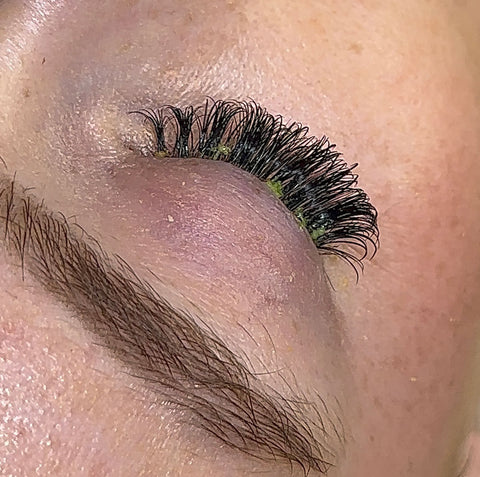FREE STANDARD SHIPPING FOR ORDERS OVER $170!
FREE STANDARD SHIPPING FOR ORDERS OVER $170!
New In
Glues & Liquids
Ebooks

What You Need to Know About Blepharitis
October 27, 2023 3 min read
Blepharitis: How A Lash Tech’s Nightmare is a Lash Mite’s Playground, and What You Can Do to Avoid It!
We’ll confess, we’re huge fans of scary stories and horror movies – Scream Franchise Marathon, anyone? What we’re definitely not big fans of though, is when horror creeps into real life and turns our clients’ lashes into walking disasters! One such disaster is Blepharitis, which is painfully common, but perhaps even more avoidable than chemical burns! So, what is Blepharitis, how does it occur, and how can you stamp it out for good?
What is Blepharitis?
Blepharitis is an inflammation of the eyelids caused by a buildup of sebum and dead skin cells clogging the lash follicles. Bad cases of Blepharitis will make the eyelids red, puffy, itchy, and perhaps even warm to the touch. It can also cause the eyeballs to feel dry and itchy which is usually how clients actually find out that they have Blepharitis in the first place, as they'll go to visit a pharmacist for something to help.
If you’ve ever had a client come back to you for a lash fill only to find that they have some crusty residue around the roots of the lashes, the likelihood is that they either had or were developing Blepharitis. If you see this in your clients’ lashes, it’s worth suggesting that they visit a doctor or pharmacist to get their lashes and eyelids back to full health.

How Does Blepharitis Occur?
Blepharitis is the result of clients not washing their lashes – that’s really all it comes down to. Blepharitis can of course occur in those who don’t have lash extensions if they’re routinely not washing their lash line, it’s just that it does tend to crop up for those who have lash extensions, as there is a common misconception leftover from the old days of eyelash extensions that you shouldn’t get your lashes wet, and therefore the lashes go unwashed.
Why is Blepharitis Bad?
Aside from looking super gross, it’s not good for your eyes to have health issues of any kind. Blepharitis is uncomfortable and can lead to conjunctivitis (pink eye) and all sorts of other issues if it’s left unchecked.
Our pores and our hair follicles play host to bacteria and little tiny microscopic bugs at all times – they’re supposed to be there and they have a really important role in our skin’s health. The issue with Blepharitis is that it causes some of these bugs to come to the surface.

Demodex Mites
You may have heard of Demodex Mites referred to as Lash Mites, and generally speaking they’re never going to cause you issues, as long as you keep your lashes clean. These are some of the aforementioned helpful little bugs that make sure our skin and lashes are healthy.
The buildup of dead skin cells and sebum that causes Blepharitis is like bottomless brunch to Demodex Mites, so they come out of the follicles, having to eat their way through all of that buildup, and then start to snack on the lashes themselves.
That’s enough to make you feel pretty itchy already, but consider that those lashes that become the mimosa of a Demodex Mite’s brunch may never grow back.

How Can You Prevent Blepharitis?
You simply need to advise your clients to clean their lashes every day.
Get a lash shampoo that’s designed specifically for cleaning lash extensions and dispense one or two pumps of the foam lash cleanser onto fingertips and work into the lashes, focusing on the glue bonds. This can be done with the fingertips or with a lash cleansing brush, as long as the lashes aren’t rubbed too hard.
Rinse well, pat the lashes dry and then brush them through to fluff them back up.
This should be done once a day, but for clients with oilier skin it’s worth doing this morning and evening.
That’s all there is to it. While Blepharitis can happen to anyone, it doesn’t mean that it should. By educating your clients on how best to look after their lash extensions, you're ensuring both their health, and that they’ll be a long-time client of yours. To really take the guesswork out of cleaning lash extensions, look into retailing lash shampoo to your clients – this increases your revenue, and also means that clients will be far more likely to actually take proper care of their lashes!
Check out these featured products
Subscribe
Sign up to get the latest on sales, new releases and more …

















